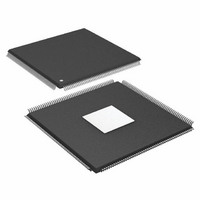ADSP-21371KSWZ-2B Analog Devices Inc, ADSP-21371KSWZ-2B Datasheet - Page 17

ADSP-21371KSWZ-2B
Manufacturer Part Number
ADSP-21371KSWZ-2B
Description
IC DSP 32BIT 266MHZ 208-LQFP
Manufacturer
Analog Devices Inc
Series
SHARC®r
Type
Floating Pointr
Specifications of ADSP-21371KSWZ-2B
Package / Case
208-LQFP
Interface
DAI, DPI
Operating Temperature
0°C ~ 70°C
Clock Rate
266MHz
Non-volatile Memory
ROM (512 kB)
On-chip Ram
128kB
Voltage - I/o
3.30V
Voltage - Core
1.20V
Mounting Type
Surface Mount
Svhc
No SVHC (18-Jun-2010)
Base Number
21371
Core Frequency Typ
266MHz
Dsp Type
Floating Point
Mmac
532
No. Of Pins
208
Interface Type
SPI, UART
Rohs Compliant
Yes
Operating Temperature Range
0°C To +70°C
Lead Free Status / RoHS Status
Lead free / RoHS Compliant
Available stocks
Company
Part Number
Manufacturer
Quantity
Price
Company:
Part Number:
ADSP-21371KSWZ-2B
Manufacturer:
Analog Devices Inc
Quantity:
10 000
Part Number:
ADSP-21371KSWZ-2B
Manufacturer:
ADI/亚德诺
Quantity:
20 000
TIMING SPECIFICATIONS
The ADSP-21371’s internal clock (a multiple of CLKIN) pro
vides the clock signal for timing internal memory, processor
core, and serial ports. During reset, program the ratio between
the processor’s internal clock frequency and external (CLKIN)
clock frequency with the CLKCFG1–0 pins (see
Page
ports, divide down the internal clock, using the programmable
divider control of each port (DIVx for the serial ports).
The ADSP-21371’s internal clock switches at higher frequencies
than the system input clock (CLKIN). To generate the internal
clock, the processor uses an internal phase-locked loop (PLL).
This PLL-based clocking minimizes the skew between the sys
tem clock (CLKIN) signal and the processor’s internal clock.
Core clock frequency can be calculated as:
CCLK = 1
14). To determine switching frequencies for the serial
3.1 2 5M H z
66 .7M H z
CLKIN
XTAL
to
@BOOT, CLKCFG[]->PLLM[]
t
RESET
CCLK
= f
INPUT
AMP
÷2
(PLLM/PLLD)
00 = 6
11 = 6
01 = 32
10 = 16
PLL B YP AS S; R e se r v ed
0
1
I NDIV[8]
Figure 3. Core Clock and System Clock Relationship to CLKIN
+
–
Table 8 on
Rev. 0 | Page 17 of 48 | June 2007
4096
FILTER
LOOP
PLLM[5..0]
DELAY
÷1
CLKOUTEN[12]
M
-
CLKIN
64
MULTIPLIER
BLOCK
VCO
1 6 0 M H z < VC O_ OU T < 8 0 0M H z
Figure 3
external oscillator or crystal. Note that more ratios are possible
and can be set through software using the power management
control register (PMCTL). For more information, see the ADSP
2136x SHARC Processor Programming Reference.
Note that in the user application, the PLL multiplier value
should be selected in such a way that the VCO frequency falls in
between 160 MHz and 800 MHz. The VCO frequency is calcu
lated as follows:
where:
f
PLLM = multiplier value programmed.
PLLD = divider value programmed.
f
f
f
VCO
INPUT
INPUT
INPUT
PLLD[7..6]
÷1, 2, 4, 8
= VCO frequency.
N
= input frequency to the PLL.
= CLKIN when the input divider is disabled.
= CLKIN/2 when the input divider is enabled.
shows core to CLKIN ratios of 6:1, 16:1, and 32:1 with
1
0
DIVEN[9]
1
BUFF
PLLBP[15]
0
1
SDRATIO[20..18]
÷2
CLKOUT
RSTO UT
CORERST
3, 3.5, 4
÷2, 2.5,
or
PCLK
(IOP)
1 00 M Hz
2 66 M Hz
CCLK
SDCLK
t o
ADSP-21371













